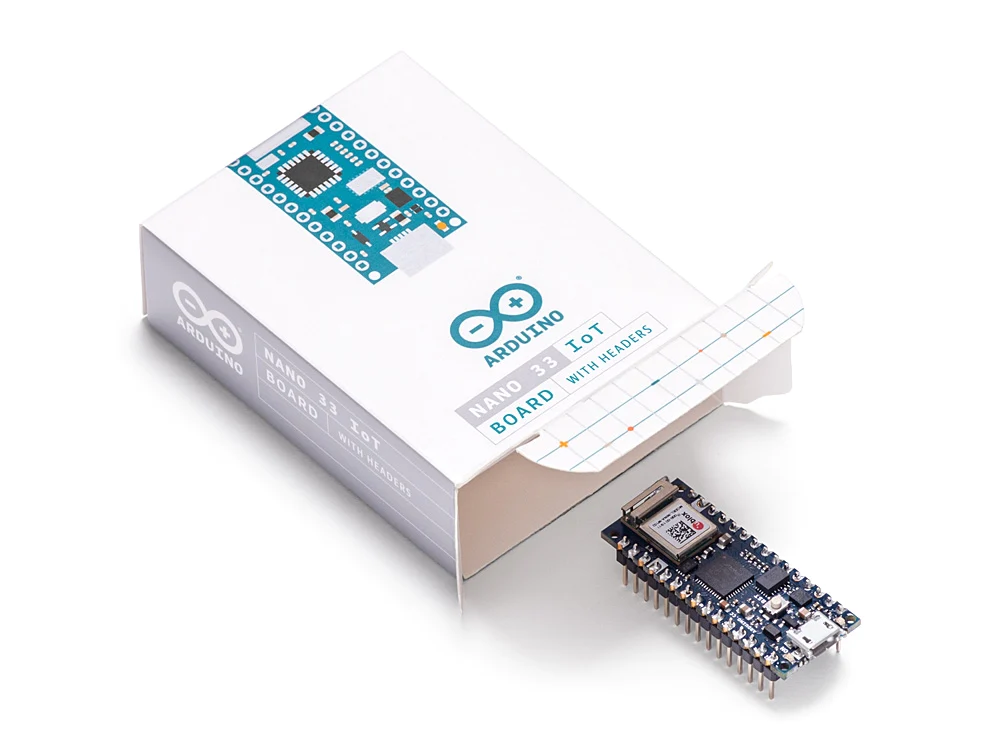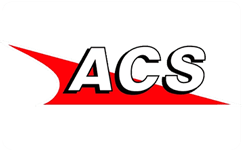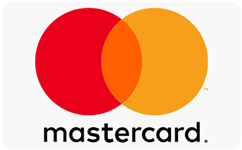Το IoT συνδυάζετε με έναν αισθητήρα IMU σε μία πλακέτα μορφής Nano.
Το Arduino Nano 33 IoT είναι το πιο εύκολο και οικονομικότερο σημείο εισόδου για την ενίσχυση των υφιστάμενων πλακετών (και τη δημιουργία νέων) ως μέρος του IoT και σχεδιασμό εφαρμογών pico-network. Είτε ψάχνετε για την κατασκευή ενός δικτύου αισθητήρων που συνδέεται με το γραφείο σας είτε με το οικιακό σας router ή αν θέλετε να δημιουργήσετε μια συσκευή BLE που στέλνει δεδομένα σε ένα κινητό τηλέφωνο, το Nano 33 IoT είναι η λύση για πολλές από τις βασικές εφαρμογές IoT.
Ο κύριος επεξεργαστής της πλακέτας είναι ένας χαμηλής ισχύος Arm® Cortex®-M0 32-bit SAMD21. Η σύνδεση WiFi και Bluetooth® εκτελείται με μια μονάδα από το u-blox, το NINA-W10, ένα chipset χαμηλής κατανάλωσης που λειτουργεί στα 2.4GHz. Επιπλέον, εξασφαλίζεται η ασφαλής επικοινωνία μέσω του κρυπτογράφου Microchip® ECC608. Εκτός αυτού, μπορείτε να βρείτε ένα IMU 6 αξόνων, αυτό που κάνει αυτή την πλακέτα τέλεια για απλά συστήματα συναγερμού δόνησης, pedometers, τοποθέτηση σε ρομπότ, κλπ.
WiFi και Arduino IoT Cloud
Στην Arduino έχουμε κάνει τη σύνδεση σε ένα δίκτυο WiFi τόσο εύκολη όσο το να αναβοσβήνει ένα LED. Μπορείτε να πάρετε την πλακέτα σας για να συνδεθείτε με οποιοδήποτε υπάρχον δίκτυο WiFi ή να το χρησιμοποιήσετε για να δημιουργήσετε το δικό σας σημείο πρόσβασης Arduino. Το συγκεκριμένο σύνολο παραδειγμάτων που παρέχουμε για το Nano 33 IoT μπορείτε να το συμβουλευτείτε στη σελίδα αναφοράς της βιβλιοθήκης WiFiNINA.
Είναι επίσης δυνατό να συνδέσετε την πλακέτα με διαφορετικές υπηρεσίες Cloud, μεταξύ άλλων και του Arduino. Εδώ είναι μερικά παραδείγματα σχετικά με τον τρόπο με τον οποίο μπορείτε να συνδεθείτε με τις πλακέτες Arduino:
- Arduino's own IoT Cloud: Το Arduino IoT Cloud είναι ένας απλός και γρήγορος τρόπος για να εξασφαλίσετε ασφαλή επικοινωνία για όλα τα συνδεδεμένα "Things" σας. Ελέγξτε το εδώ.
- Blynk: ένα απλό project από την κοινότητά μας που συνδέει με τον Blynk να λειτουργήσει η πλακέτα από ένα τηλέφωνο με μικρό κώδικα.
- IFTTT: δείτε μια σε βάθος περίπτωση κατασκευής ενός έξυπνου βύσματος συνδεδεμένου με το IFTTT.
- AWS IoT Core: κάναμε αυτό το παράδειγμα σχετικά με τον τρόπο σύνδεσης με τις Υπηρεσίες Web της Amazon.
- Azure: επισκεφθείτε το github repository εξηγεί για το πώς μπορείτε να συνδέσετε έναν αισθητήρα θερμοκρασίας στο Cloud της Azure.
- Firebase: θέλετε να συνδεθείτε με το Firebase της Google, αυτή η βιβλιοθήκη Arduino θα σας δείξει πώς.
Σημείωση: ενώ τα περισσότερα από τα παραπάνω παραδείγματα τρέχουν στο MKR WiFi 1010, και οι δύο πλακέτες έχουν τον ίδιο επεξεργαστή και ασύρματο chipset, πράγμα που σημαίνει ότι θα είναι δυνατή η αναπαραγωγή τους με το Nano 33 IoT.
Το κάνουμε Open για να το Hackάρουμε Μαζί
Το Nano 33 IoT είναι μια συσκευή διπλού επεξεργαστή που προκαλεί για πειραματισμό. Hackάροντας τη μονάδα WiFiNINA σας επιτρέπει, για παράδειγμα, να χρησιμοποιήσετε ταυτόχρονα το WiFi και το BLE / Bluetooth® στην πλακέτα. Ακόμη μια άλλη δυνατότητα είναι η υπερ-ελαφριά έκδοση του linux που τρέχει στη μονάδα, ενώ ο κύριος μικροελεγκτής ελέγχει συσκευές χαμηλού επιπέδου όπως κινητήρες ή οθόνες. Αυτές οι πειραματικές τεχνικές, απαιτούν προηγμένη γνώση hacking από την πλευρά σας. Μπορεί να γίνει μέσω τροποποίησης του υλικολογισμικού της μονάδας που μπορείτε να βρείτε στα github repositories.
ΠΡΟΣΟΧΗ: αυτό το είδος hacking σπάει την πιστοποίηση και την εγγύηση του module WiFiNINA, το κάνετε με δική σας ευθύνη.

Bluetooth και BLE
Το chipset επικοινωνιών στο Nano 33 IoT μπορεί να είναι ταυτόχρονα μια συσκευή client BLE και Bluetooth® και μια κεντρική συσκευή. Κάτι πολύ μοναδικό στον κόσμο των μικροελεγκτών. Αν θέλετε να δείτε πόσο εύκολο είναι να δημιουργήσετε μια κεντρική ή μια περιφερειακή συσκευή Bluetooth®, εξερευνήστε τα παραδείγματα στη βιβλιοθήκη ArduinoBLE.
Σχετικές Πλακέτες
Αν ψάχνετε για αναβάθμιση από τα προηγούμενα Arduino ή εάν ενδιαφέρεστε ακριβώς για πλακέτες με παρόμοια λειτουργικότητα, στο Arduino μπορείτε να βρείτε:
- Arduino MKR WiFi 1010: η Pro έκδοση του Nano 33 IoT, δεν διαθέτει το επιταχυνσιόμετρο, αλλά περιλαμβάνει έναν φορτιστή μπαταρίας και τον σύνδεσμο Arduino Eslov για εξωτερικές πλακέτες I2C. Διαβάστε περισσότερα εδώ.
- Arduino Uno WiFi rev2: η εκπαιδευτική έκδοση του MKR WiFi 1010, με υποδοχή USB-B και ενσωματωμένο επιταχυνσιόμετρο. Διαβάστε περισσότερα εδώ.
- MKR WiFi 1000: μπορεί να εκτελέσει μόνο εφαρμογές WiFi, καθώς περιλαμβάνει ένα διαφορετικό chipset από το Nano 33 IoT. Διαβάστε περισσότερα για αυτό εδώ.






















